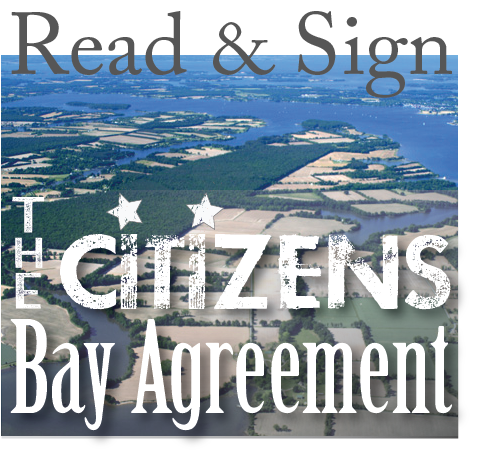Chesapeake Bay Action Plan
After decades of effort, the voluntary, collaborative approach to restoring the health and vitality of the Chesapeake Bay— the largest estuary in the United States—has not worked and, in fact, is failing.
A diverse group of 57 senior scientists and policymakers have joined forces to save the Bay. This is our plan.
GERALD WINEGRAD: ESSENTIAL MEASURES FOR CHESAPEAKE BAY RESTORATION | COMMENTARY
By Gerald Winegrad Last week’s column detailed how the governor and legislature failed to address the major environmental threats facing the Chesapeake Bay in the last legislative session. Despite waves of greenwashing depicting how well bay restoration is proceeding, the harsh reality is that after 41 years of efforts, the best we can say is that…
An Open Letter to the Chesapeake Bay Conservation Community
An Open Letter to the Chesapeake Bay Conservation Community By Gerald Winegrad May 5, 2025 Despite the gross failure of the Bay states to achieve the dictates of the Chesapeake TMDL by 2025 after being given 15 years to do, there have been no sanctions. Nor have the EPA or Bay states taken any new…
GERALD WINEGRAD: EARTH DAY REVEALS A TROUBLED PLANET | COMMENTARY
In 1969, my fascination with wildlife led me to my first real job after graduating from law school and becoming an attorney. I was hired as counsel to the National Wildlife Federation in Washington, D.C., the beginning of 55 years of environmental advocacy. In February 1970, I attended a meeting with other conservationists convened by…
GERALD WINEGRAD: LOOKING FOR HEROES IN DEMORALIZING TIMES | COMMENTARY
By Gerald Winegrad Like most readers, I am recoiling daily from horrific news as the fabric of our democracy is torn asunder. It is as if the world we knew is being turned upside down, where the rule of law doesn’t matter and where billionaire autocrats rule with impunity. Dedicated career and probationary federal government employees…
DREAM OF A RESTORED CHESAPEAKE BAY IS IN DIRE STRAITS
Many insiders have learned that the easiest path in dealing with the major reason for failure — agriculture — is to throw more money at voluntary programs that have not worked and disregard regulatory actions. Policymakers, conservation leaders and some scientists have learned that job security, advancement and monetary rewards come from promoting a firehose of dollars to put out the ecological fire, thus avoiding conflict. Too many supposed leaders have become environmental mercenaries who desire to avoid any blowback in pushing for regulatory changes that impede the financial prospects of themselves or their organizations. You will repeatedly hear these environmental mercenaries touting the great successes of the Bay Program.
A SECOND TRUMP TERM WILL BE DEVASTATING FOR OUR ENVIRONMENT AND WILDLIFE | COMMENTARY
In Trump’s previous four-year reign, Earthjustice sued to block the dismantling of environmental regulations 200 times and won 85% of their cases. I am ramping up my contributions to them, and if you care about our environment, you may want to do so, too.
CHESAPEAKE OYSTER SANCTUARIES HOLD PROMISE FOR RECOVERY | COMMENTARY
The sanctuary and aquaculture initiatives were vigorously opposed by oyster harvesters and the oyster industry. As they had for 140 years, they again fought any proposals that decreased public oyster grounds. Instead, they promoted the government system of paying to plant shell and seed oysters for them to harvest and sell. Such resistance has impeded the switch to aquaculture for 140 years despite the unambiguous evidence that aquaculture could produce an enormous quantity of oysters. This has been the case throughout the world as wild stocks crashed.
GERALD WINEGRAD: LARRY HOGAN’S SELF-DEALING AND ANTI-ENVIRONMENTAL REGIME | COMMENTARY
Hogan still portrays himself as a small business owner. But HOGAN enterprises reported more than $2.5 billion in real estate deals since 1985. His enterprises are still touting their ability to grease the skids for government approvals and entitlements. HOGAN’s website claims: “If you want to determine the best strategy for taking your property through the governmental entitlement process as well as achieve the best development potential and highest return on your investment, you only need to turn to HOGAN.”
We are senior Chesapeake Bay scientists and policymakers from Maryland, Virginia and Pennsylvania who have concluded that after decades of effort, the voluntary, collaborative approach to restoring the health and vitality of the largest estuary in the United States has not worked and, in fact, is failing. Our group unanimously recommends that all states draining into the Chesapeake Bay adopt our 25 action items in their Watershed Implementation Plans (WIP) and implement them to improve the Bay’s water quality and to meet the requirements of the Clean Water Act.
Sign up for news & updates from Patuxent Riverkeeper
